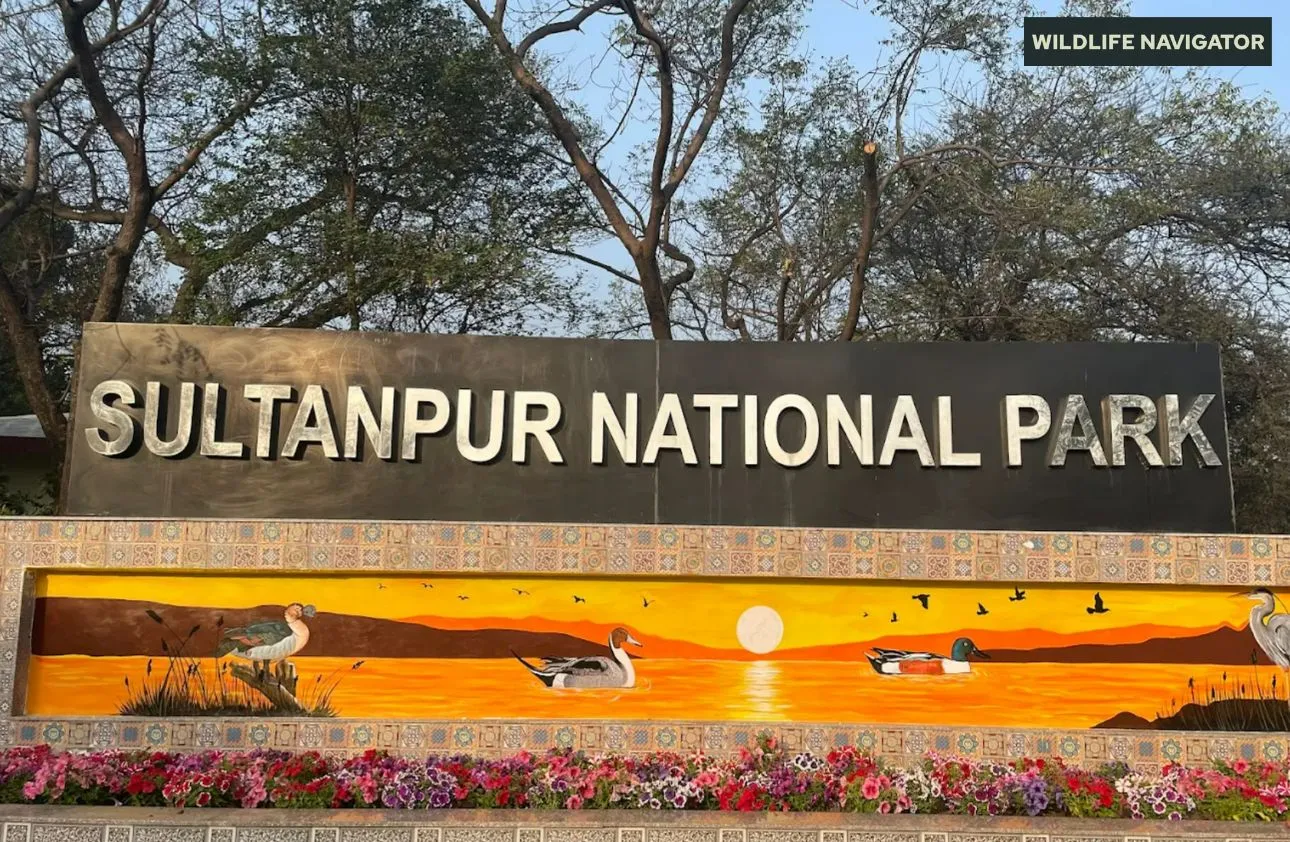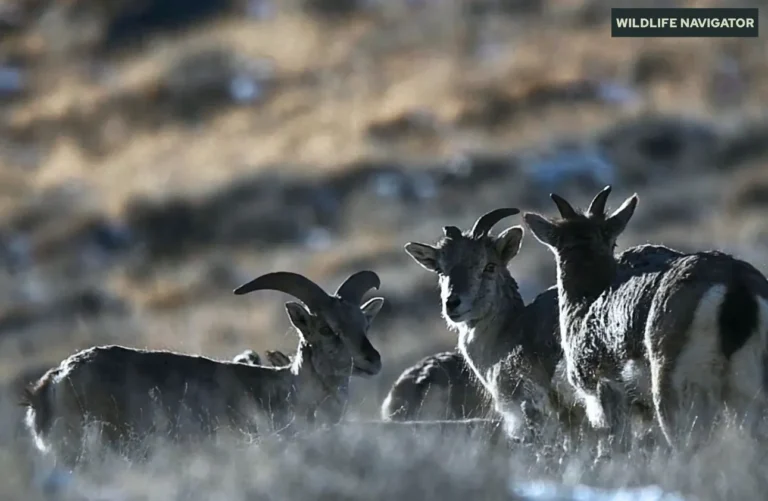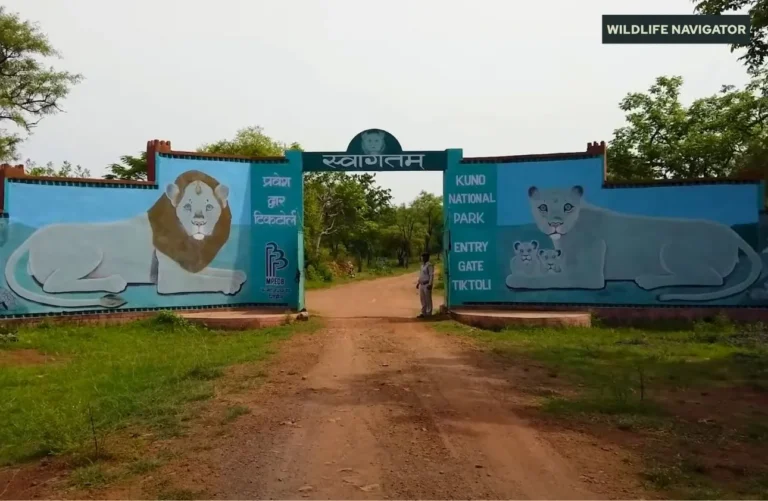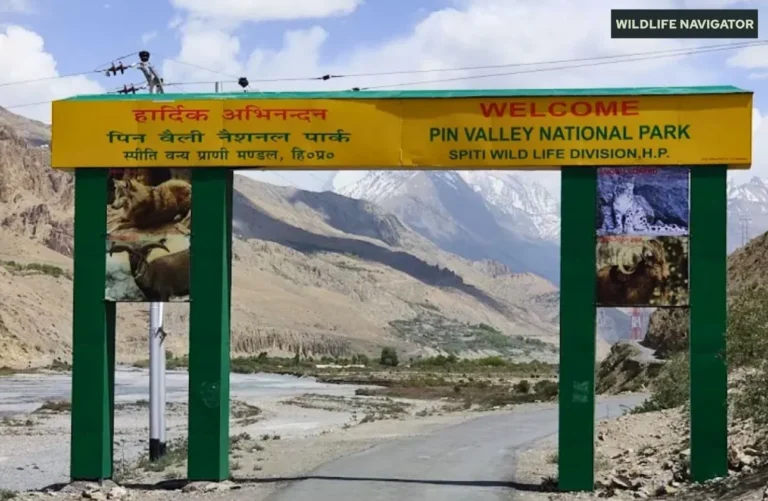Sultanpur National Park Guide: Birdwatching, Travel Tips and More

Sultanpur National Park, located in the Gurgaon district of Haryana and just around 40 km from the heart of Delhi, is one of North India’s most accessible and rewarding birdwatching destinations. Spread across tranquil wetlands surrounded by grasslands and patches of woodland, this protected area plays a vital role in sustaining migratory and resident bird species in the otherwise rapidly urbanising Delhi-NCR region. It stands as a significant stop for bird lovers exploring national parks in India, thanks to its proximity to the capital and rich biodiversity.
Recognised as a Ramsar site of international importance, the park attracts thousands of migratory birds every winter, travelling long distances from Central Asia, Siberia, and Europe. With over 250 species recorded, Sultanpur is a paradise for bird photographers, wildlife enthusiasts, families, and nature lovers seeking a peaceful escape from city life. Its serene walking trails, watchtowers, and lakeside viewpoints offer ideal settings to observe waterfowl, waders, raptors, and grassland birds in their natural habitat.
Whether you’re a seasoned birder or simply looking for a refreshing nature outing near Delhi, Sultanpur National Park provides an immersive experience that celebrates India’s rich birdlife and wetland ecosystems.
Overview & History
Sultanpur’s wetlands have been attracting birds for more than a century, long before they received formal protection. The ecological value of this region came into focus in 1969 during an IUCN conference in New Delhi, where conservationists emphasised the need to safeguard this thriving wetland ecosystem close to the national capital.
British naturalist Peter Jackson, then secretary of the Delhi Birdwatching Society, played a pivotal role in championing the site. He brought Sultanpur’s importance to the attention of PM Indira Gandhi, who supported its conservation. Following this, the Haryana government declared Sultanpur a bird sanctuary on 2 April 1971 under the Punjab Wildlife Preservation Act, covering approximately 1.21 sq km. This milestone places Sultanpur among the earliest protected wetland habitats listed alongside key bird sanctuaries in India.
As the site continued to gain ecological importance—especially as a winter refuge for migratory birds travelling along the Central Asian Flyway—efforts to enhance protection intensified. On 5 July 1991, the sanctuary was upgraded to Sultanpur National Park under the Wildlife Protection Act. Its area was also expanded to about 1.42 sq km, incorporating land from the surrounding villages of Sultanpur, Sadhrana, Chandu, and Saidpur.
Today, Sultanpur stands as a successful example of India’s wetland conservation movement—evolving from a vital bird sanctuary into one of North India’s most accessible and celebrated national parks, and continuing to play a crucial role in protecting migratory and resident birdlife.
Geography & Habitat
Wetland Core
At the centre of Sultanpur National Park lies a natural lake that forms the core wetland habitat. This lake fills primarily during the monsoon season through rainwater and supplementary canal inflow. The shallow waters support aquatic plants, insects, and fish, which in turn attract large flocks of waterfowl, waders, and migratory birds during winter.
Grasslands & Scrub Forest
Encircling the wetland are open grasslands and scattered scrub forests dominated by acacia and kikar trees. These dry patches provide nesting and roosting spots for resident species, raptors, and ground-dwelling birds. The mix of grasses and thorny shrubs also supports small mammals and reptiles, adding to the park’s overall biodiversity.
Seasonal Dynamics
The park experiences dramatic seasonal shifts that shape its ecology. Water levels rise during monsoon months, revitalising the lake and encouraging breeding activity among resident birds. As winter arrives and migratory species return, the wetland becomes a bustling hub of avian life. Summer brings drier conditions, concentrating wildlife around shrinking water sources and making sightings easier, but temperatures are harsh.
Climate & Ecosystem Balance
Located in a semi-arid zone, Sultanpur has hot summers, mild winters, and an important monsoon season that sustains its wetland cycle. Proper water management is essential to maintain the delicate balance between wetland and grassland habitats. This seasonal rhythm plays a crucial role in attracting both permanent and migratory bird populations, maintaining the park’s status as a key birding destination.
Flora and Fauna
Flora
Sultanpur National Park features a blend of wetland and dryland vegetation that supports diverse wildlife. The central marsh area is dominated by aquatic plants, reeds, and submerged grasses that create ideal feeding and nesting grounds for waterbirds.
Moving outward, the landscape transitions into semi-arid scrub forest and grassland with scattered trees like acacia, neem, jamun, and ber. These provide shade, nesting sites, and perches for birds and small mammals. The combination of aquatic and terrestrial vegetation helps maintain ecological balance, offering food, shelter, and breeding spaces throughout the year.
Key plant types include:
- Acacia nilotica (Kikar)
- Prosopis juliflora
- Ber bushes
- Jamun trees
- Neem trees
- Dhak / Flame-of-the-forest
- Grasses and reeds around the wetland
- Aquatic plants and algae
Fauna of Sultanpur National Park
Sultanpur supports wildlife adapted to wetland and grassland habitats. Birds dominate the landscape, but mammals, reptiles, amphibians, and insects contribute to the rich ecological web. Together, these species maintain natural food chains and balance within the park.
Avifauna (Birds)
With over 250 species recorded, birds are the star attraction of Sultanpur National Park. It serves as a major winter refuge for migratory species arriving from Central Asia, Europe, and Siberia. Ducks, geese, waders, and raptors gather around the lake during winter, while resident species remain active through the year in grasslands and trees.
Notable migratory birds:
- Bar-headed goose
- Northern pintail
- Eurasian wigeon
- Common teal
- Greylag goose
- Shoveler
- Gadwall
- Ruff
- Common sandpiper
- Wood sandpiper
Prominent resident birds:
- Sarus crane
- Black-headed ibis
- Painted stork
- Indian roller
- Red-wattled lapwing
- White-throated kingfisher
- Grey francolin
- Purple sunbird
- Indian peafowl
Mammals
Although Sultanpur National Park is best known for its birdlife, Sultanpur is also home to several mammals. Nilgai, India’s largest antelope, is a frequent sight grazing in open meadows. Smaller mammals like hares, squirrels, and mongooses forage near the wetland edges, while golden jackals roam during dawn and dusk. These species support ecosystem health through seed dispersal, pest control, and natural predation.
Common mammals spotted:
- Nilgai (blue bull)
- Indian hare
- Indian grey mongoose
- Golden jackal
- Five-striped palm squirrel
Reptiles & Amphibians
Wetland conditions naturally support a population of reptiles and amphibians. Turtles, lizards, and non-venomous snakes are often seen basking near water channels, while frogs and toads thrive especially during monsoon months. Their presence reflects healthy wetlands and provides a vital food source for birds and reptiles.
Reptiles and amphibians include:
- Star tortoise
- Monitor lizard
- Garden lizard
- Non-venomous snakes
- Common frogs and toads
Best Time to Visit
Ideal Season
The best time to visit Sultanpur National Park is from October to March, when migratory birds arrive from colder regions such as Siberia, Central Asia, and Europe. During this period, the wetland is active, temperatures are pleasant, and bird diversity is at its peak, making it the prime season for photography, nature walks, and birdwatching.
Winter Highlights
Winter mornings often bring mist over the lake, creating ideal atmospheric conditions for wildlife photography. Flocks of geese, ducks, and waders occupy the wetland, while raptors patrol the skies. Early morning and late afternoon visits are particularly rewarding, as birds are most active during these hours.
Monsoon Season
The monsoon months (July–September) rejuvenate the wetland and surrounding vegetation. While migratory species are absent, the park becomes lush and green, offering opportunities to observe breeding activity among resident birds. Frogs, insects, and reptiles are more visible, contributing to a vibrant ecological scene.
Summer Visit Notes
Summer (April–June) is the least favorable time due to high temperatures and dry conditions. Water levels drop and bird activity reduces significantly. However, mornings can still provide sightings of resident species, especially around remaining water bodies.
Recommended Visiting Hours
- Morning: Sunrise to ~10:00 AM — best for sightings and photography
- Evening: 3:00 PM to sunset — cooler temperatures and active bird movement
Carrying binoculars, a long lens for photography, water, and sun protection is advisable. Silence, patience, and slow movement significantly improve wildlife viewing opportunities.
Visitor Information
Entry Timings
Sultanpur National Park follows seasonal timings aligned with daylight hours.
- Winter (October–March): Approximately 7:00 AM to 4:30 PM
- Summer (April–September): Approximately 6:30 AM to 6:00 PM
Arriving at opening time is recommended for the best sightings and comfortable weather.
Entry Fees
The entry fee for Sultanpur National Park:
- Indians: INR 50
- Children (5-12 years old): INR 20
- Foreigners: INR 300
- Bike parking: INR 10
- Car parking: INR 30
Facilities
The park provides basic visitor amenities:
- Walking trails around the wetland
- Bird hides and watchtowers for observation
- Resting shelters and benches
- Drinking water points (carry your own bottle recommended)
- Small information/interpretation center (availability may vary)
- Parking space near the entrance
Food counters are not available inside the park, ensuring minimal disturbance to wildlife.
What to Carry
Visitors should come prepared, especially during peak birding hours.
Recommended items:
- Binoculars
- Camera with zoom lens (optional but useful)
- Water bottle
- Sun protection (hat, sunscreen)
- Comfortable walking shoes
- Light jacket in winter mornings
Avoid loud clothing or accessories that may startle wildlife.
Rules & Guidelines
Sultanpur is a protected habitat, and visitors must follow conservation protocols.
- Do not play music or speak loudly
- Avoid feeding or disturbing animals
- Do not litter or carry plastic into the park
- Stay on marked trails
- Respect signage and staff instructions
- Photography with drones is not permitted
Quiet observation and patience result in better experiences and support wildlife safety.
How to Reach
Nearest City
Sultanpur National Park is located in the Gurgaon (Gurugram) district of Haryana, approximately 40 km from central Delhi and 15 km from Gurgaon city center. Its close proximity to Delhi-NCR makes it an ideal day-trip destination.
By Air
- Nearest Airport: Indira Gandhi International Airport (Delhi)
Distance: ~25–30 km
From the airport, taxis and app-based cabs provide direct access to the park.
By Rail
- Nearest Major Railway Station: Gurgaon Railway Station (~14 km)
- Alternative Option: New Delhi Railway Station (~45 km)
Cabs, auto-rickshaws, and local transport options are available from Gurgaon railway station.
By Road
Sultanpur National Park is well-connected by road via Gurgaon-Farrukh Nagar Road.
Travel options include:
- Personal vehicle
- App-based taxis (Uber/Ola)
- Local taxis from Gurgaon
- Occasional local buses toward Farrukh Nagar (less frequent, less convenient)
Approximate travel time from Delhi NCR:
- From Delhi (central): 1–1.5 hours
- From Gurgaon: 30–45 minutes
Parking is available at the park entrance.
Accommodation Options
Stay in Gurgaon
There are no lodging facilities inside Sultanpur National Park, but Gurgaon (Gurugram) offers a wide range of accommodation choices suitable for all budgets. Its proximity makes it the most convenient base for visitors planning early morning birdwatching trips.
Options in Gurgaon include:
- Budget hotels and guesthouses
- Mid-range business hotels
- Premium hotels & luxury resorts
- Service apartments and homestays
These provide easy access to the park along with dining and transport facilities.
Nearby Eco-Stay & Rural Retreats
Around Sultanpur and Farrukh Nagar, a few farm stays and nature retreats operate seasonally. These offer quiet countryside stays, making them ideal for birders, photographers, and nature lovers seeking a peaceful environment close to the park.
Delhi Stay Option
Travellers staying in Delhi can also visit Sultanpur as a day trip, especially from areas like Dwarka, West Delhi, and South Delhi, which are closer to Gurgaon. Hotels in Delhi offer options across all categories, including boutique stays and luxury hotels.
Booking Tips
- Choose accommodation near the Gurgaon-Farrukh Nagar road for shorter travel time
- Book early during winter birding season (November–February)
- Prefer properties with early breakfast options or takeaway meals if visiting at sunrise
Conservation Efforts, Challenges & Responsible Tourism
Conservation Initiatives
Sultanpur National Park plays a critical role in protecting North India’s wetland ecosystems and migratory bird routes. Authorities work on habitat restoration, water level management, and maintaining vegetation that supports breeding and feeding. Seasonal water supplementation ensures the wetland remains suitable for birds even during dry months. Awareness programs, nature education, and occasional guided birding walks foster public interest in conservation.
Efforts focus on:
- Wetland rejuvenation and water channel maintenance
- Protection of nesting and roosting zones
- Regulating visitor movement to reduce disturbance
- Anti-poaching vigilance and wildlife monitoring
- Habitat improvement for migratory and resident species
Major Challenges
Despite protection, the park faces ecological pressures due to its proximity to fast-growing urban areas. Urban expansion, pollution, and habitat fragmentation can affect water quality, bird movement, and plant growth. Climate change also influences rainfall patterns and wetland water cycles.
Key concerns include:
- Water scarcity during peak dry seasons
- Urban pollution and noise from surrounding areas
- Habitat pressure from development
- Disturbance from irresponsible visitor behaviour
- Climate-induced changes affecting migration timing and wetland health
Responsible Tourism
Visitor participation is crucial in safeguarding this fragile ecosystem. By practicing responsible tourism, visitors help maintain ecological balance while enjoying nature experiences.
Guidelines for ethical visits:
- Maintain silence and avoid disturbing wildlife
- Stay on designated trails and viewing platforms
- Do not feed birds or animals
- Carry reusable water bottles; avoid plastic
- Take all waste back with you
- Avoid flash photography and loud equipment
- Respect breeding zones and park staff instructions
Visiting with patience, awareness, and sensitivity enhances the experience while contributing to conservation. The goal is not just to observe nature but to protect it for future generations.
Nearby Major Wildlife Attractions
While Sultanpur National Park is a premier birdwatching destination, several noteworthy wildlife spots lie within convenient reach, offering nature lovers a chance to explore diverse habitats across Delhi-NCR and Haryana.
1. Najafgarh Jheel (Najafgarh Wetland) – ~15 km
A natural extension of Sultanpur’s wetland ecosystem, this Delhi-Haryana wetland supports thousands of winter migratory birds. Species like bar-headed geese, ducks, herons, and raptors make it a rapidly emerging birding hotspot.
2. Basai Wetlands (Gurgaon) – ~15 km
An unprotected but highly significant wetland, Basai is known for outstanding bird diversity. Frequent sightings include:
- Garganey
- Northern shoveler
- Yellow-wattled lapwing
- Bluethroat
It is popular among bird photographers due to close viewing opportunities.
3. Bhindawas Wildlife Sanctuary & Bird Sanctuary (Jhajjar) – ~50 km
A Ramsar-designated freshwater wetland Bhindawas, is among the most rewarding bird sanctuaries in India for winter migrants. Key species include:
- Bar-headed geese
- Marsh harriers
- Purple swamphen
- Siberian stonechat
Ideal for a combined Sultanpur–Bhindawas birding trip.
4. Damdama Lake (Haryana) – ~45 km
A scenic lake near the Aravalli ranges offering nature trails, boating, and weekend eco-tourism. It attracts migratory birds in winter and offers opportunities for light trekking and outdoor recreation.
5. Asola Bhatti Wildlife Sanctuary (Delhi) – ~55 km
Located along the Delhi-Haryana border in the Aravallis, this sanctuary protects semi-arid scrub forest. Wildlife includes:
- Nilgai
- Golden jackal
- Peafowl
- Raptors
Home to the BNHS Conservation Education Centre.
6. National Zoological Park (Delhi Zoo) – ~45 km
Situated near India Gate, the National Zoological Park is one of India’s major zoological institutions focusing on wildlife conservation, captive breeding, and education. Highlights include:
- Royal Bengal tiger
- Asiatic lion
- Indian rhinoceros
- Gharials and other reptiles
- Exotic and native bird aviaries
Its curated habitats complement Sultanpur’s natural wetlands, offering a broader understanding of India’s wildlife diversity.
Conclusion
Sultanpur National Park stands as one of the most accessible and rewarding bird sanctuaries near Delhi-NCR, offering an immersive escape into nature just a short distance from urban life. With its rich wetland ecosystem, seasonal influx of migratory birds, and peaceful walking trails, the park provides a haven for birdwatchers, photographers, families, and nature lovers.
Beyond being a recreational space, Sultanpur plays a vital role in conserving migratory routes, protecting wetland biodiversity, and fostering ecological awareness in one of India’s busiest regions. A visit here is not only an opportunity to witness diverse birdlife but also a reminder of the importance of preserving natural habitats in rapidly developing landscapes.
Whether you’re seeking calm in nature, planning a dedicated birding trip, or exploring India’s protected wetlands, Sultanpur National Park delivers a meaningful and memorable experience—making it a must-visit destination for wildlife enthusiasts and conservation-minded travellers.





